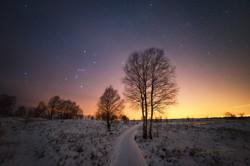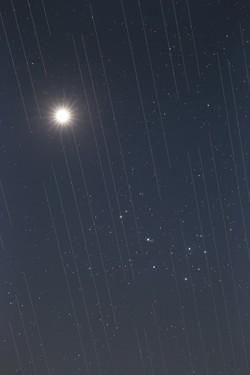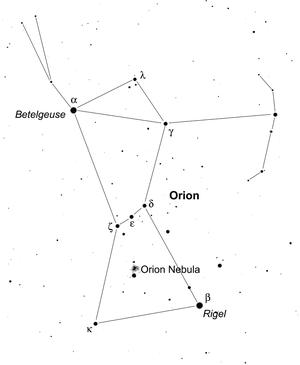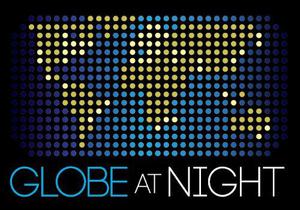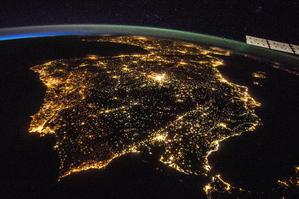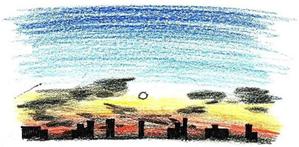Glossary term: Inquinamento luminoso
Description: L'inquinamento luminoso è la presenza di un'illuminazione artificiale eccessiva o difettosa (emessa in una direzione al di sopra dell'orizzonte), come i lampioni, che provoca lo schiarimento del cielo notturno. Si tratta di un fenomeno inopportuno, poiché disturba l'osservazione di stelle, e pianeti, modifica gli ecosistemi e molti altri cicli naturali che si ripercuotono sugli esseri viventi. Inoltre, l'inquinamento luminoso è anche un utilizzo inefficiente delle finanze e delle risorse.
Related Terms:
See this term in other languages
Term and definition status: The original definition of this term in English have been approved by a research astronomer and a teacher The translation of this term and its definition is still awaiting approval
The OAE Multilingual Glossary is a project of the IAU Office of Astronomy for Education (OAE) in collaboration with the IAU Office of Astronomy Outreach (OAO). The terms and definitions were chosen, written and reviewed by a collective effort from the OAE, the OAE Centers and Nodes, the OAE National Astronomy Education Coordinators (NAECs) and other volunteers. You can find a full list of credits here. All glossary terms and their definitions are released under a Creative Commons CC BY-4.0 license and should be credited to "IAU OAE".
Related Media
Notte stellata sul parco nazionale dell'Eifel, di Dong Han, Cina
Credit: Dong Han/IAU OAE
License: CC-BY-4.0 Creative Commons Attribuzione 4.0 Internazionale (CC BY 4.0) icons
Panorama reale sull'inquinamento luminoso, di Tomas Slovinsky, Slovacchia
Credit: Tomáš Slovinský/IAU OAE
License: CC-BY-4.0 Creative Commons Attribuzione 4.0 Internazionale (CC BY 4.0) icons
Sciame di satelliti contrapposti alla bellezza del cielo notturno, di Torsten Hansen, Germania
Credit: Torsten Hansen/IAU OAE
License: CC-BY-4.0 Creative Commons Attribuzione 4.0 Internazionale (CC BY 4.0) icons
Related Activities
How Light Pollution Affects the Stars: Magnitude Readers
astroEDU educational activity (links to astroEDU website) Description: Build a Magnitude Reader to explore the magnitude of stars.License: CC-BY-4.0 Creative Commons Attribuzione 4.0 Internazionale (CC BY 4.0) icons
Tags: Hands-on , Dark skies , ecology Age Ranges: 10-12 , 12-14 , 14-16 , 16-19 Education Level: Middle School Areas of Learning: Modelling , Observation based Costs: Medium Cost Duration: 1 hour Group Size: Group Skills: Asking questions , Planning and carrying out investigationsGlobe at Night Activity Guide
astroEDU educational activity (links to astroEDU website) Description: Learn to observe and record the faintest visible stars to measure the light pollution.License: CC-BY-4.0 Creative Commons Attribuzione 4.0 Internazionale (CC BY 4.0) icons
Tags: Hands-on , Dark skies , ecology , Citizen science Age Ranges: 4-6 , 6-8 , 8-10 , 10-12 , 12-14 , 14-16 , 16-19 , 19+ Education Level: Informal , Middle School , Other , Primary , Secondary , University Areas of Learning: Observation based , Project-based learning Costs: Low Cost Group Size: Group Skills: Communicating information , Planning and carrying out investigationsHow Many Stars Can You See at Night?
astroEDU educational activity (links to astroEDU website) Description: Investigate the effects of light pollution on night sky observation.License: CC-BY-4.0 Creative Commons Attribuzione 4.0 Internazionale (CC BY 4.0) icons
Tags: Software , ecology , Observation of sky , Pollution , Constellations , stellarium Age Ranges: 12-14 Education Level: Middle School Areas of Learning: Observation based , Social Research Costs: Low Cost Duration: 45 mins Group Size: Group Skills: Analysing and interpreting data , Communicating information , Planning and carrying out investigationsEvening Sky Watching for Students
astroEDU educational activity (links to astroEDU website) Description: Let's observe the evening sky with the naked eyeLicense: CC-BY-4.0 Creative Commons Attribuzione 4.0 Internazionale (CC BY 4.0) icons
Tags: Art , Observation of sky , Sky watching , Motion of star Age Ranges: 4-6 , 6-8 Education Level: Pre-school , Primary Areas of Learning: Discussion Groups , Observation based , Social Research Costs: Free Duration: 30 mins Group Size: Group Skills: Asking questions , Communicating informationLet there be light… but not too much!
astroEDU educational activity (links to astroEDU website) Description: Build a model to learn what light pollution is and what its effects are.License: CC-BY-4.0 Creative Commons Attribuzione 4.0 Internazionale (CC BY 4.0) icons
Tags: Pollution , sky observation , lighting source Age Ranges: 6-8 , 8-10 , 10-12 Education Level: Middle School , Primary Areas of Learning: Discussion Groups , Modelling , Observation based , Project-based learning Costs: Medium Cost Duration: 2 hours Group Size: Group Skills: Asking questions , Developing and using models , Engaging in argument from evidence